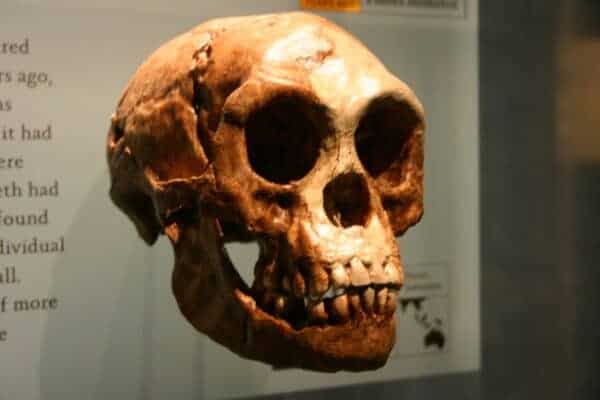A new study based on CT scans of the hobbit skulls suggest that homo erectus may possibly have been an ancestor to homo floresiensis, and supports the theory that the reduction in size may have come about due to island dwarfism.

Brain size of Homo floresiensis and its evolutionary implications
Daisuke Kubo, Reiko T. Kono and Yousuke Kaifu
Proc. R. Soc. B 2013 280, 20130338, published 17 April 2013
doi: 10.1098/rspb.2013.0338
The Real ‘Hobbit’ Had Larger Brain Than Thought
LiveScience, 16 April 2013
Hobbit Humans Had Big Brains
Discovery News, 16 April 2013
Researchers find ‘hobbit human’ had an orange-sized brain – and may have evolved from the first human species to walk fully upright
Daily Mail, 16 April 2013
Study backs ‘hobbit’ island dwarfism theory
BBC News, 17 April 2013
Brain size points to origins of ‘hobbit’
ABC Science, 17 April 2013
The origin of “hobbits” is revealed: study
The Korea Herald, 17 April 2013
Researchers back claim that Flores ‘hobbits’ grew smaller as they evolved
AFP, 17 April 2013
Hobbit’s Brain Size Holds Clues About Its Ancestor
National Geographic News, 18 April 2013
The extremely small endocranial volume (ECV) of LB1, the type specimen of Homo floresiensis, poses a challenge in our understanding of human brain evolution. Some researchers hypothesize dramatic dwarfing of relative brain size from Homo erectus presumably without significant decrease in intellectual function, whereas others expect a lesser degree of brain diminution from a more primitive, small-brained form of hominin currently undocumented in eastern Asia. However, inconsistency in the published ECVs for LB1 (380–430 cc), unclear human intraspecific brain–body size scaling and other uncertainties have hampered elaborative modelling of its brain size reduction. In this study, we accurately determine the ECV of LB1 using high-resolution micro-CT scan. The ECV of LB1 thus measured, 426 cc, is larger than the commonly cited figure in previous studies (400 cc). Coupled with brain–body size correlation in Homo sapiens calculated based on a sample from 20 worldwide modern human populations, we construct new models of the brain size reduction in the evolution of H. floresiensis. The results show a more significant contribution of scaling effect than previously claimed.
Full article here.























